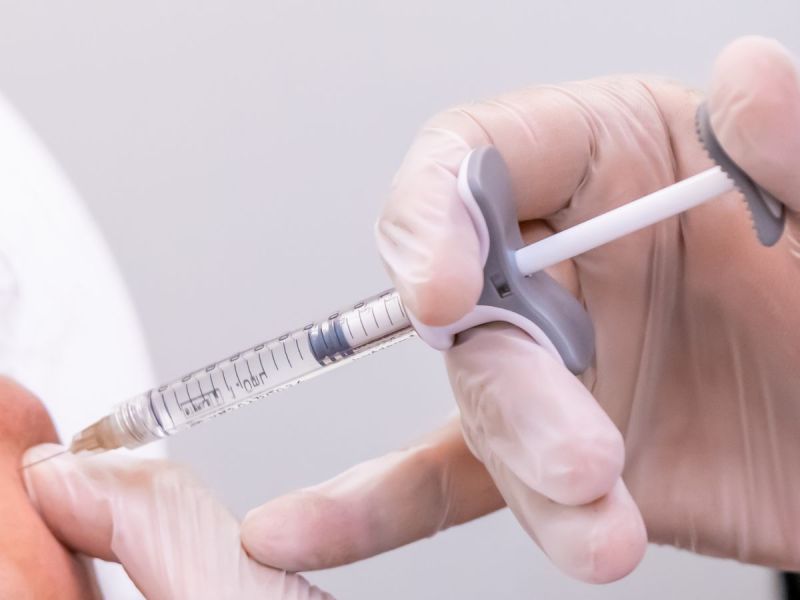Dermal fillers have become an increasingly popular beauty trend in recent years due to their affordability, convenience, and minimal recovery time.
Videos by Suggest
Aside from being fast-acting, fillers are also believed to be a temporary solution to reversing volume loss without surgery or downtime—an ideal option for those who want to test the waters of cosmetic procedures without making a major commitment.
It’s possible, however, that those who use dermal fillers are making a longer commitment than they signed up for, raising some questions about their permanence.
A Surprising Discovery
Apart from the widely-held belief that these injections are temporary, those who opt for dermal fillers are also told they can be dissolved at any time if they wish to remove them. But we’re discovering that doesn’t always entirely take care of the issue.
Take longtime beauty writer Alice Hart-Davis’ cautionary tale regarding dermal fillers, for example.
Like many, Hart-Davis believed dermal fillers were temporary, so she was shocked when she saw how much residual filler was still present in her face after undergoing an MRI. Although she hadn’t had any filler injections in four years, the MRI showed 35ml of filler still present in her face, more than she’d ever had in the 20 years since she first began dermal injections.
Now in her 60s, Hart-Davis noted that she’d started her filler journey in her 40s and had received extensive treatments over the following 20 years.
Her cosmetic treatments included hyaluronic acid (HA) fillers in her temples, cheeks, and lips. Beyond that, she’d also used injections to smooth her nose-to-mouth lines, fill in tear troughs, and define her jawline, chin, and even the tails of her eyebrows.
Hart-Davis was told that her treatments would last a year or so at most and that in order to maintain her appearance, she’d need to undergo additional regular HA injections. In fact, several clinics actually insist that you visit every six to 12 months to keep your look fresh.
Even though she was shocked by the amount of filler left over in her face as shown on the MRI, she wasn’t entirely surprised either. In spite of being told about fillers’ limited lifespan and the routine upkeep they required, Hart-Davis had also heard reports over the years of fillers lasting much longer. In the course of following one physician’s research on the subject, Hart-Davis became fascinated by what she learned.
Filler Doesn’t Always Go Away On Its Own
After seeing a number of cosmetic patients with swelling around the eyes, Dr. Mobin Master, an aesthetic radiologist in Melbourne, questioned whether residual filler was to blame. His investigation eventually shone a public light on the longevity of dermal fillers.
Although he knew MRI scans could be useful for identifying filler left in the face, Dr. Master noted that seeing residual filler dating from two to nearly 12 years back on a variety of patient scans was a “surprising discovery.” In Hart-Davis’ case, even her radiologist, Dr. Simon Morley, was astounded by her results.
The residual filler amazingly didn’t appear to be causing any visual issues, yet Dr. Morley said he was “blown away” by the amount left over under her skin. Considering hyaluronic acid is meant to dissolve over time, what could have caused this?
As in Hart-Davis’ case, doctors speculate that hyaluronic acid’s ability to attract water might explain why the residual filler showed up as a larger volume on her MRI scan. There’s also the possibility that the scan picked up on filler that had integrated with her facial tissue as well as plain old leftover filler. Either might explain why the whopping 35ml of filler on Hart-Davis’ scan exceeded the total amount of filler she’d received in her lifetime.
What does this mean for dermal fillers in the long run? Although this information shouldn’t necessarily scare those who use fillers and other facial injectables out of using them, it may shed some light on the potential longevity of your treatments.
Bottom line: When considering filler, it’s important to keep in mind that it might remain under your skin for much longer than you expect.
